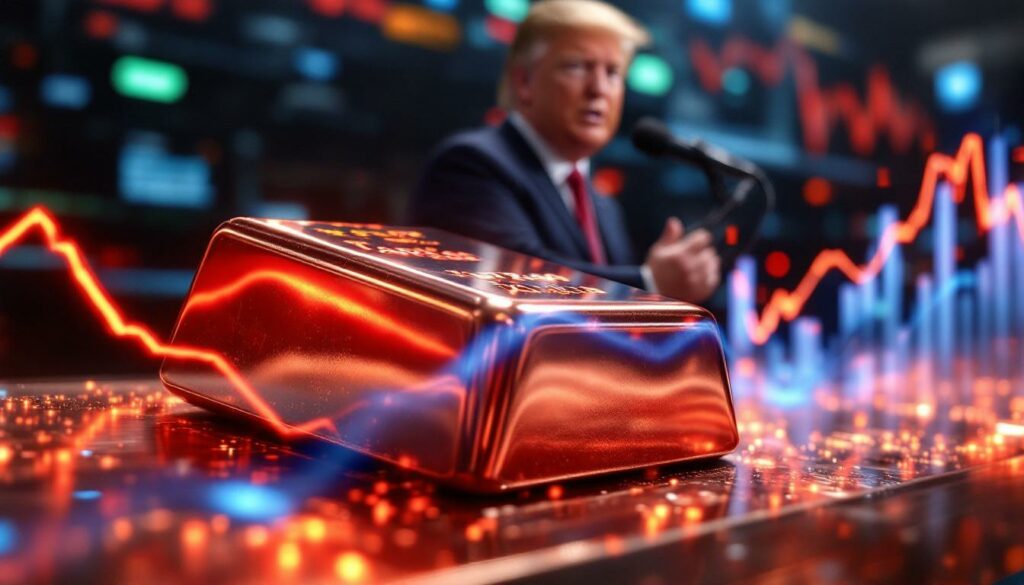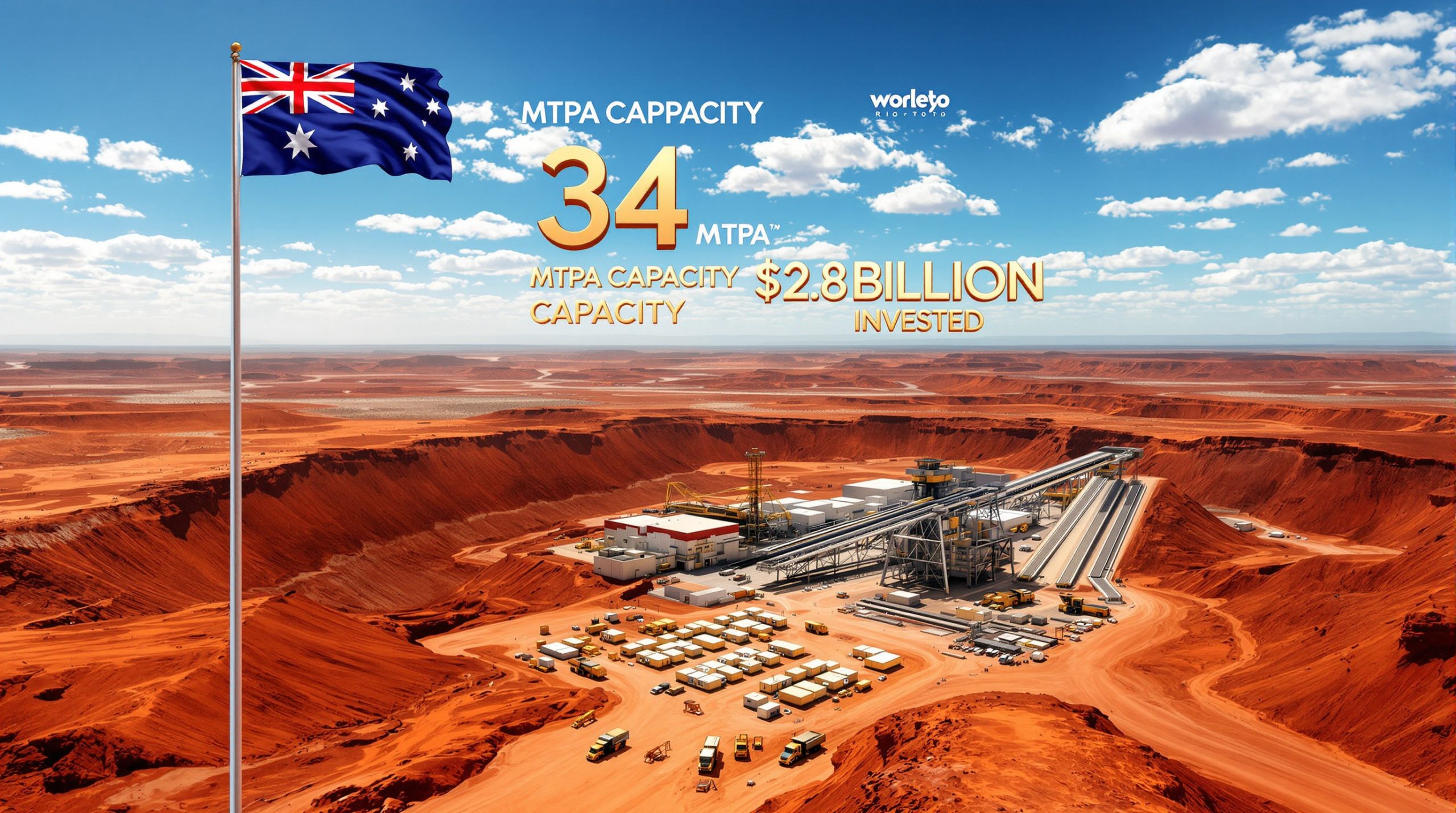What's Driving the Current Copper Price Pressure?
Trump's Tariff Announcements Creating Market Uncertainty
The copper market is facing significant downward pressure amid growing concerns over potential trade disruptions following recent announcements from former President Trump. According to the latest Shanghai Metal Market (SMM) data from July 7, 2025, Trump has indicated plans to send between 12-15 tariff-related letters to various countries, setting an August 1 deadline for reaching new agreements.
This development has triggered considerable uncertainty in global metal markets, with investors increasingly concerned about the potential Trump tariff impact across international supply chains and demand centers. As SMM analysts noted, "The uncertainty surrounding the US's potential restoration of tariffs has heightened concerns about international trade friction, leading to increased market risk aversion."
Historical precedent suggests such policy shifts can significantly impact copper prices. During the 2018-2019 US-China trade tensions, copper prices experienced a 15-20% decline within months of tariff implementation, as manufacturing activity contracted in key markets and inventory levels surged.
Market Impact Perspective: "Trade policy uncertainty typically triggers a risk-off sentiment in industrial metals, with copper often serving as the leading indicator due to its widespread economic applications," notes a veteran metals trader at Shanghai Futures Exchange.
For investors and industry participants, the critical question remains whether the August 1 deadline will result in actual tariff implementation or serve primarily as negotiating leverage. Either way, the market is likely to experience heightened volatility as this date approaches.
Global Copper Inventory Buildup
Compounding the tariff-related pressures, copper inventories have seen a substantial increase, further weighing on prices. Nationwide copper inventories reached 142,900 metric tons as of early July 2025, representing a significant week-over-week increase of 11,100 metric tons according to SMM data.
This inventory surge stems from two primary factors:
- Increased Import Volumes: Large shipments arriving at major Chinese ports
- Weakening Consumption: Slowing industrial activity and construction sector demand
The regional distribution of these inventory increases appears concentrated in eastern and southern China's industrial hubs, though specific breakdowns weren't provided in the latest SMM report. This geographic concentration suggests potential regional demand disparities worth monitoring.
Historically, copper price resistance tends to strengthen when inventories exceed the 140,000 metric ton threshold, particularly when this coincides with external market pressures like tariff disturbances and copper prices under pressure. The current inventory level has already surpassed this psychological barrier, creating technical headwinds for price recovery.
How Are Copper Futures Markets Responding?
BC Copper Contract Performance Analysis
The Bonded Copper (BC) futures market has responded negatively to these dual pressures of tariff uncertainty and inventory buildup. According to SMM's July 7 report, the BC copper 2508 contract experienced a notable decline, opening at 71,060 yuan/mt and closing significantly lower at 70,510 yuan/mt.
Daily trading statistics paint a clear picture of bearish sentiment:
- Opening price: 71,060 yuan/mt
- Closing price: 70,510 yuan/mt
- Daily high: 71,170 yuan/mt
- Daily low: 70,380 yuan/mt
- Net change: -920 yuan/mt (-1.29%)
- Trading volume: 3,688 lots
- Open interest: 5,320 lots (down 184 lots)
The substantial 1.29% single-day decline highlights the market's heightened sensitivity to both trade policy signals and physical market fundamentals. Technical analysts note the rejection at the 71,170 yuan/mt level suggests strong resistance, while the brief dip to 70,380 yuan/mt indicates an emerging support zone that could be tested further if negative sentiment persists.
The declining open interest (down 184 lots) coupled with moderate volume suggests some traders are reducing exposure rather than establishing new positions, indicating uncertainty about near-term price direction.
SHFE vs. BC Copper Price Spread Dynamics
An equally important indicator for market participants is the evolving relationship between the Shanghai Futures Exchange (SHFE) and Bonded Copper (BC) contracts. SMM data shows the SHFE copper 2508 contract closed at 79,270 yuan/mt, while the BC copper after-tax price calculated to 79,676 yuan/mt.
This creates an inverted spread of -406 yuan/mt, indicating that:
- The BC contract (representing bonded warehouse material) is trading at a premium to the SHFE contract (representing domestic material)
- This inversion has narrowed compared to previous trading sessions
| Contract Type | Closing Price (yuan/mt) | Spread |
|---------------|-------------------------|--------|
| SHFE 2508 | 79,270 | |
| BC 2508 (after tax) | 79,676 | -406 |
This spread narrowing suggests potentially improving sentiment in the domestic Chinese copper market relative to import material. Under normal market conditions, the SHFE price typically maintains a premium over BC copper due to import duties and logistical costs. The current inverted relationship indicates unusual market dynamics that often accompany periods of supply chain disruption or changing trade policies.
Traders frequently monitor this spread for arbitrage opportunities, as significant deviations from historical norms can signal profitable trading opportunities between the two contracts.
What Are the Macroeconomic Factors Influencing Copper Markets?
International Trade Tensions and Copper Demand
The looming threat of renewed tariffs represents a significant headwind for copper demand surge. According to SMM analysis, the market is particularly concerned about tariffs affecting major copper-consuming countries, potentially disrupting global manufacturing supply chains.
Copper demand is highly sensitive to manufacturing activity due to its widespread applications in:
- Electrical equipment: Motors, transformers, and wiring components
- Construction materials: Plumbing, roofing, and architectural elements
- Transportation: Electric vehicles (containing 4x more copper than conventional vehicles)
- Renewable energy: Solar panels, wind turbines, and energy storage systems
Historical evidence from the 2018-2019 trade tensions demonstrated how manufacturing sectors contract during periods of trade uncertainty. During that period, manufacturing purchasing managers' indices (PMIs) in both China and the United States declined for several consecutive months, correlating strongly with reduced copper consumption.
Demand Impact Analysis: "Copper's unique position as both an industrial necessity and financial asset makes it particularly vulnerable to macroeconomic shocks like tariff implementation," explains an SMM commodity analyst.
Supply chain managers typically respond to tariff announcements by immediately reducing inventory levels and postponing capital expenditures, creating a demand vacuum that can persist even if tariffs aren't ultimately implemented. This psychological effect alone can suppress copper consumption for several months.
Currency and Central Bank Influences
Beyond direct trade policy, copper markets are increasingly influenced by monetary policy and currency movements. According to data referenced in the SMM report, China's foreign exchange reserves rose 1.27% month-over-month in June 2025, while central bank gold reserves increased for the eighth consecutive month.
This pattern of reserve accumulation often correlates with shifts in industrial metal purchasing patterns, as:
- Central bank gold accumulation typically occurs during periods of currency uncertainty
- Currency valuations directly impact the purchasing power for copper imports
- Reserve policy signals often precede shifts in infrastructure spending patterns
The US dollar's strength or weakness particularly impacts copper prices, as the metal is predominantly priced in dollars on global markets. When the dollar strengthens due to safe-haven flows during trade tensions, copper often faces additional downward pressure as it becomes more expensive for non-dollar economies.
These currency dynamics create a complex feedback loop: trade tensions strengthen the dollar, which pressures copper prices, which then impacts mining profitability and investment decisions, potentially affecting future supply.
What's Happening in the Copper Mining Sector?
Production Updates from Key Players
On the supply side, several noteworthy developments are influencing market expectations. According to SMM reporting, Shengda Resources has announced that Honglin Mining's Caiyuanzi copper-gold mine is expected to commence trial production between July and September 2025.
While specific production volume forecasts weren't included in the announcement, this new capacity entering the market could further influence supply-demand dynamics during a period already characterized by inventory buildup and demand uncertainty.
The copper mining landscape has seen significant evolution in recent years:
- Project pipeline acceleration: Rising prices in 2022-2023 triggered increased investment
- Technological innovation: Remote operations and AI-powered extraction improving efficiency
- ESG considerations: Environmental regulations increasingly impacting project timelines
- Geographical shifts: New production increasingly coming from frontier mining regions
The timing of the Caiyuanzi mine's production is particularly noteworthy, as it coincides with the potential implementation of tariffs. This could create a situation where new supply enters the market just as demand faces headwinds.
Supply-Side Constraints and Opportunities
Despite new projects coming online, the copper mining sector continues to face structural challenges that could limit supply growth:
- Declining ore grades: Many established mines now process lower-grade material
- Water scarcity: Mining operations in Chile and Peru increasingly competing for water resources
- Energy transition costs: Pressure to reduce carbon footprints adding to production costs
- Labor issues: Wage negotiations and worker shortages affecting operational continuity
These constraints have historically provided a floor for copper prices during demand downturns, as marginal production becomes uneconomical and supply adjusts accordingly. However, the current inventory buildup suggests these supply constraints haven't yet been sufficient to balance the market.
For investors, understanding the timing of new capacity versus production challenges is essential for anticipating potential price inflection points. Moreover, staying informed about the global copper supply forecast will help anticipate future market movements.
What's the Technical Outlook for Copper Prices?
Price Support and Resistance Levels
Technical analysis of copper futures contracts reveals several key price levels that traders are monitoring closely. Based on recent trading patterns in the BC copper contract, significant technical levels include:
- Immediate resistance: 71,170 yuan/mt (recent daily high)
- Psychological resistance: 72,000 yuan/mt (round number)
- Immediate support: 70,380 yuan/mt (recent daily low)
- Secondary support: 70,000 yuan/mt (psychological level)
The BC copper contract's rejection at 71,170 yuan/mt suggests strong selling pressure emerges at this level, while the bounce from 70,380 yuan/mt indicates potential buying interest around the 70,000-70,500 yuan/mt zone.
Moving average analysis shows prices have fallen below the 20-day moving average, a traditionally bearish signal that often precedes further declines. Volume patterns suggest higher trading activity during price declines compared to advances, another classically bearish technical indicator.
| Technical Indicator | Current Reading | Signal |
|---------------------|-----------------|--------|
| 20-day MA | Above current price | Bearish |
| RSI (14-day) | Below 40 | Approaching oversold |
| Volume trend | Higher on declines | Bearish confirmation |
Trading Strategies in the Current Environment
The combination of fundamental pressures and technical patterns presents both challenges and opportunities for copper market participants. In the current environment characterized by tariff uncertainty, several strategic approaches warrant consideration:
- Risk management prioritization: Reducing position sizes and implementing tighter stop-loss parameters
- Spread trading opportunities: Exploiting the narrowing SHFE-BC spread through calendar spreads
- Options strategies: Using puts or put spreads to hedge downside exposure while maintaining upside potential
- Technical breakout monitoring: Establishing alerts for breaks below key support levels (70,000 yuan/mt)
Trading Psychology Insight: "In tariff-driven markets, price movements often overshoot fundamentals as algorithmic trading amplifies sentiment shifts," notes a veteran metals trader. "This creates both risks and opportunities for prepared participants."
For physical market participants, the current environment may favor delayed purchasing strategies, as prices could face further pressure if tariffs materialize. However, maintaining minimum inventory levels remains prudent given the potential for supply chain disruptions.
How Does Copper Compare to Other Metals in the Current Market?
Cross-Metal Correlations and Performance
Copper's performance amid tariff concerns provides valuable context when compared to other metals in the broader commodities complex. While specific cross-metal pricing data wasn't included in the SMM report, historical patterns suggest several likely correlations:
- Base metals basket: Copper typically leads directional moves in aluminum, zinc, and nickel
- Precious metals divergence: Gold often moves inversely to copper during risk-off periods
- Battery metals relationship: Lithium and cobalt increasingly correlated with copper due to EV demand
During previous tariff implementation periods (2018-2019), copper demonstrated higher volatility than aluminum but less than nickel, reflecting its unique position as both an industrial necessity and financial market indicator.
The copper-to-gold ratio, a closely watched indicator of economic sentiment, typically contracts during periods of trade tension as investors shift from industrial to safe-haven assets. This ratio bears monitoring as the August 1 tariff deadline approaches.
Investment Flows Analysis
Capital flows within the metals complex offer additional insights into market positioning ahead of potential tariff implementation. Institutional positioning in copper futures and ETFs often signals broader economic sentiment:
- Commercial hedgers: Typically increase short positions during tariff uncertainty
- Managed money: Often reduces long exposure ahead of potential market disruptions
- ETF investors: Frequently shift from industrial to precious metals during risk-off periods
While specific positioning data wasn't included in the SMM report, monitoring these flows will be crucial as the August 1 deadline approaches. Significant changes in commercial short positions, in particular, can signal how physical market participants are preparing for potential supply chain disruptions.
The potential for sector rotation between metal categories remains high given the current environment, with investors likely to favor metals with lower exposure to direct tariff impacts.
FAQ: Copper Markets and Tariff Impacts
How do tariffs typically affect copper prices?
Tariffs impact copper prices through several transmission mechanisms:
- Immediate sentiment effect: Initial announcement typically triggers 2-5% price drops
- Medium-term demand impact: Manufacturing activity contracts as supply chains adjust
- Regional price differentials: Premiums/discounts emerge between affected/unaffected regions
- Duration-dependent severity: Effects compound if tariffs remain in place for extended periods
Historical examples demonstrate this pattern clearly. During the 2018 implementation of Section 232 tariffs, copper prices declined approximately 20% over the subsequent three months as manufacturing activity contracted and inventory levels rose.
The timeline of price adjustments typically follows a pattern: initial sharp decline (1-2 weeks), partial recovery as markets digest implications (2-4 weeks), then sustained pressure if tariffs are implemented (3+ months).
What indicators should investors watch to anticipate copper price movements?
Market participants should monitor several leading indicators to anticipate copper price predictions during periods of tariff uncertainty:
- Manufacturing PMIs: Early indicator of industrial activity changes
- Inventory reports: SHFE, LME, and COMEX weekly stock changes
- Physical premiums/discounts: Spot market price differentials above/below futures
- Spread relationships: Contango/backwardation shifts often precede price trend changes
- Options skew: Put/call pricing revealing market sentiment bias
Among these, physical premiums and inventory movements often provide the earliest signals of changing market dynamics. Accelerating inventory builds, in particular, frequently precede price declines as they indicate consumption is lagging production.
For tariff-specific insights, monitoring trade flow data from customs authorities can reveal emerging shifts in material movement patterns before they impact broader market pricing.
How might copper supply chains adjust to new tariff regimes?
Supply chain adaptations to tariff implementation typically occur in stages:
- Initial inventory adjustments: Drawdown of existing stocks to delay import decisions
- Sourcing shifts: Procurement from non-tariffed origins where possible
- Processing relocations: Moving refining/fabrication to circumvent tariff boundaries
- Product reformulation: Reducing copper intensity where substitution is possible
These adjustments can create significant regional price differentials and altered trade flows. During the 2018-2019 tariff period, for instance, copper cathode flows shifted substantially, with Chinese imports increasingly sourced from Africa rather than the Americas.
For manufacturers, tariff implementation often accelerates existing trends toward regional supply chain consolidation, with an increased premium placed on supply security over cost minimization.
What is the relationship between copper prices and renewable energy growth?
Copper's relationship with renewable energy creates a unique market dynamic during trade uncertainty:
- High copper intensity: Electric vehicles contain 4x the copper of conventional vehicles
- Solar and wind dependency: Each MW of renewable capacity requires 4-5 tons of copper
- Grid infrastructure requirements: Transmission expansions driving significant demand
While tariffs might temporarily suppress copper demand, the structural growth in renewable energy represents a potential counterbalance to trade-related headwinds. Government infrastructure spending on green initiatives has historically accelerated during economic uncertainty, sometimes creating a demand floor for industrial metals.
However, material substitution remains a risk, as aluminum and other alternatives can replace copper in some applications if price differentials become too extreme. Additionally, understanding the [Codelco copper strategy](
Ready to Stay Ahead of Major ASX Mineral Discoveries?
Don't miss out on potentially transformative investment opportunities! Gain instant access to significant ASX mineral discoveries through Discovery Alert's proprietary Discovery IQ model, delivering real-time notifications that could give you a crucial market advantage at https://discoveryalert.com.au/discoveries/.




